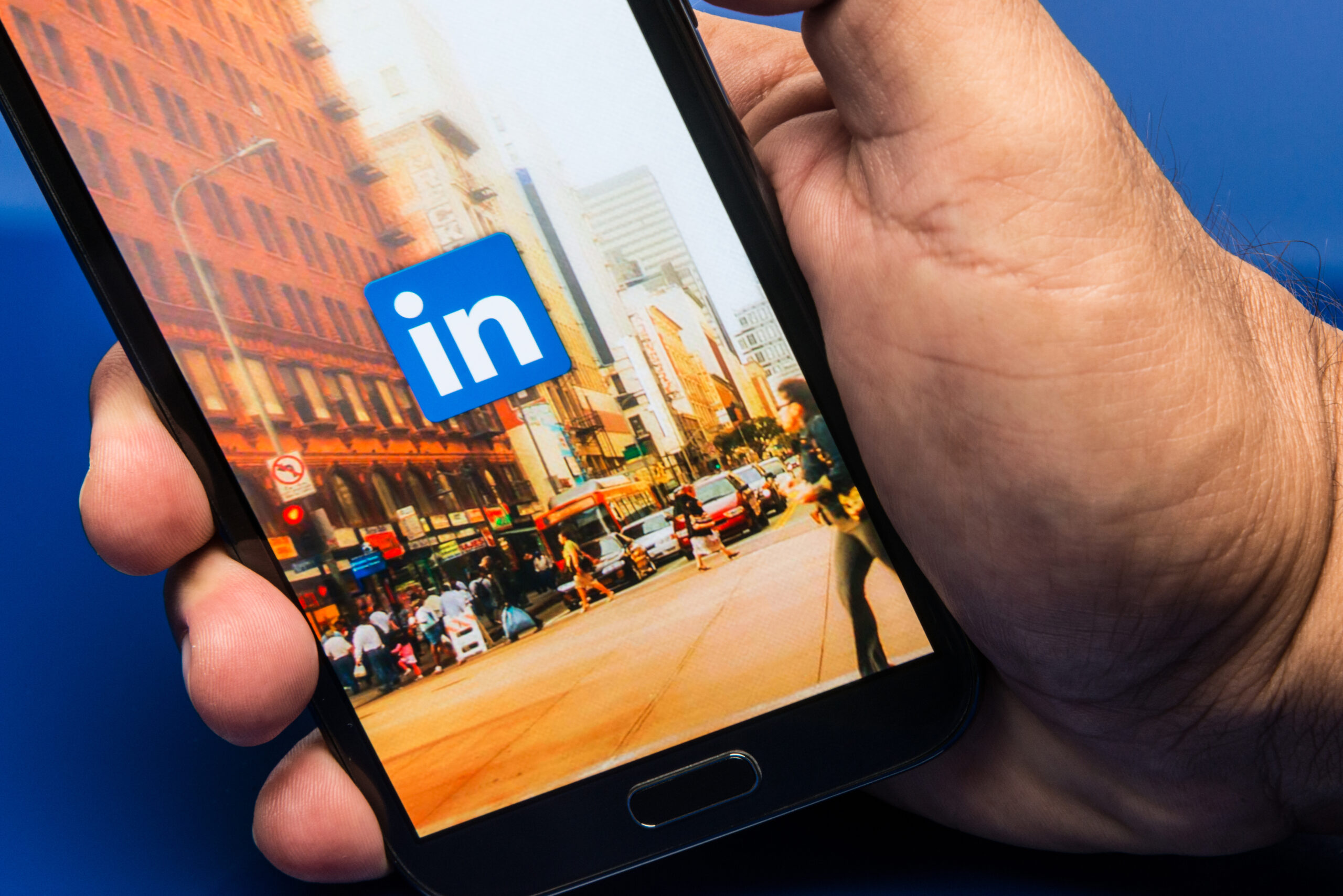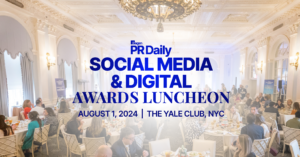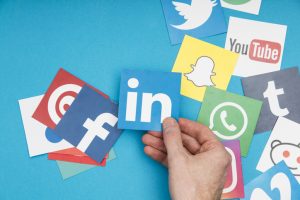Top stories of 2022: How May LinkedIn algorithm updates affect your company page
And one trick that’ll make your LinkedIn life easier.

Editor’s note: We are re-running the top stories of 2023 as part of our year-end countdown. This story was our third most-read.
LinkedIn has grown beyond a platform for personal connections and networking to become the largest opportunity for businesses to connect with potential sales prospects, extend their brand reach, connect with employees, recruit, and engage in industry-wide conversations.
The more visibility you and your company have on LinkedIn, the more people will know who you are. Salespersons that share content regularly on LinkedIn have a 45% likelihood to surpass their sales target.
It’s easy to understand the benefit of LinkedIn for the individual, but some companies are still exploring how they can further leverage the platform in a more targeted way. In May 2022, LinkedIn rolled out a major algorithm update. Here’s how that affects your company page, as well as a hot little trick just released by LinkedIn that will save you time, build engagement and help your B2B social.
The LinkedIn Algorithm – What it means for brands
LinkedIn works the same way many other social networks do – the audience for a company page is limited to those currently following the page or those following hashtags that are used. The success of a company page really relies on its employees to share the company content and boost its exposure. Simply resharing a company update alone boosts that content to a whole separate network of followers.
In fact, content that employees share has two times more engagement in comparison to those shared by the company. This is because the LinkedIn (LI) algorithms are designed to highlight individuals over company profiles. When employees comment on company communications, the visibility of that post to larger networks increases. The more company page followers, the higher the page will rank in LinkedIn search results, sparking greater reach and potential interaction with its content. The more engagement a post receives (“likes” or other post reactions), the more it is prioritized in the news stream by LinkedIn. This also applies to any engagement from the poster themselves, such as commenting “Thanks for giving it a read,” to a colleague that provides kudos on a blog with your byline.
The LinkedIn algorithm makes content go through a series of filters. Each post gets placed into one of three categories: spam, low quality, or qigh quality (clear). If your content is considered “not spam,” then it gets posted to the audience to decide how popular the content will be. First it is shown to small groups of followers. If the post receives more engagement, LinkedIn ranks it higher and the post will continue to be seen by more people. This also applies to engagement by a poster themselves. It’s important that you’re making sure your company and personal profiles are up to date because LI ranks those profiles higher as well. Ensure that your personal page meets the “All Star Profile” qualifications from LI. Research has shown that these profiles are also prioritized in the algorithm.
But just like everything on social platforms, the algorithm is always changing and in May 2022 the algorithm went through a pretty significant update to make it more complex and therefore less easy to game.
What’s new and how can you optimize your content?
Engagement is still the number one thing that gets a post prioritized by the algorithm. Posts are favored if they are considered quality content and if they generate interactions. However, LinkedIn has introduced new penalizations that will flag LI to sort a post as spam or low quality and de-prioritize it in the news feed. LinkedIn posted its own blog on the new algorithm here.
Stand out
This might go without saying, but since I see a lot of variety out there, I’ll say it: Brands must create eye-catching content. Everything must be well written, use proper grammar and should include images or video (LinkedIn loves the carousel posts), specific typography, and emojis to break up text while drawing attention to specific areas.
Short presentations are also useful for generating engagement – just make sure the font isn’t too small and the slides aren’t too cluttered for it to be showcased well on the platform.
Asking for likes
New in the LinkedIn Algorithm, if you ask for likes, follows or comments, your post will be demoted in the feed. LinkedIn clarifies: “We’ve seen a number of posts that expressly ask or encourage the community to engage with content via likes or reactions – posted with the exclusive intent of boosting reach on the platform. We’ve heard this type of content can be misleading and frustrating for some of you. We won’t be promoting this type of content and we encourage everyone in the community to focus on delivering reliable, credible and authentic content.”
Outbound links
LinkedIn favors keeping everyone on the platform. Therefore, outbound links are frowned upon and the new algorithm will now penalize posts even more for outbound links that take users away from the platform. Hootsuite did an experiment that showed that posts without outbound links got six times more reach then posts with links. What can brands do about this? You can post links in the comments, but that means you need to create custom graphics. You can also just start conversations with your audience – you don’t always have to be talking at them.
Golden hour
Choosing the right time to post is very important. There has been a lot of research about when to post,, but it’s most important to post content when it is most likely that your audience will be online. Locations and time zones do make a difference – as do people’s daily habits. Do some tests to see when you get the most interaction from your brand’s own audience. Most research Monday through Friday, 11 a.m. to 5 p.m. are good times.
Why does this matter so much? There is something that many LinkedIn marketers call, “The Golden Hour,” which is the first 60 minutes after content is posted. This is considered the most crucial time for determining if a post will succeed or not. If no one reacts within the first 60 minutes, then your post is going to get downgraded and deprioritized in the feed. The best possible way to ensure a post’s success is to get engagement on it in the first hour.
One way to do this is to internally alert staff that a post has gone up. Caster uses Slack to alert team members that a new post has gone up to engage with. Some clients prefer that we tag employees on LinkedIn so that they are included in the post, can engage with it from there, and get recognition for their contributions to the content. However, the algorithm says don’t tag more than 3-5 people, and if those people don’t engage with the post, then it is more points against the content. Only tag people that will engage quickly.
Another way to engage people with your content is to include hashtags. Experts say between 3-5 hashtags is best.
Finally, don’t post and ghost. If someone engages or comments on your post, you should respond – join conversations and be active on the network because each interaction brings it back up in the news feed and increases the chances for people to see the post.
Bottom line
The algorithms are always changing and we can try strategies so our quality content doesn’t get left in the dust, but the core truth never changes — people reading your content are just people. If you write for real humans and not only to outsmart an algorithm, then you will have success with your content. Consistency and relevancy are what matter most.
The LinkedIn Engagement Toggle
Now when you see a post that you’d like to engage with (comment, like, share), you can toggle from your personal profile to a company page that you are an admin of and engage as the company. This is brand new! Before, you were only able to comment on the posts of other people or companies if that post specifically tagged your company. This is a major update and a big time saver. Happy toggling everyone!

Alex Crabb is the SVP at Caster Communications, a boutique global tech PR agency. She can be reached at @AlexCrabb on Twitter.







Great article! Lots of great points to discuss with our marketing team!